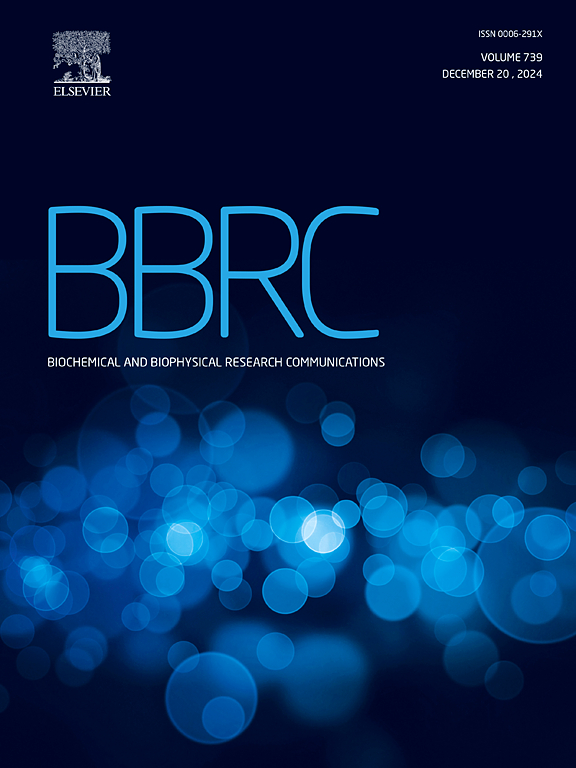NELL1 variant protein (NV1) modulates hyper-inflammation, Th-1 mediated immune response, and the HIF-1α hypoxia pathway to promote healing in viral-induced lung injury
IF 2.2
3区 生物学
Q3 BIOCHEMISTRY & MOLECULAR BIOLOGY
Biochemical and biophysical research communications
Pub Date : 2025-01-01
DOI:10.1016/j.bbrc.2024.151198
引用次数: 0
Abstract
Research underscores the urgent need for technological innovations to treat lung tissue damage from viral infections and the lasting impact of COVID-19. Our study demonstrates the effectiveness of recombinant human NV1 protein in promoting a pro-healing extracellular matrix that regulates homeostasis in response to excessive tissue reactions caused by infection and injury. NV1 achieves this by calibrating multiple biological mechanisms, including reducing hyperinflammatory cytokine levels (e.g., IFN-γ, TNF-α, IL-10, and IP-10), enhancing the production of proteins involved in viral inactivation and clearance through endocytosis and phagocytosis (e.g., IL-9, IL-1α), regulating pro-clotting and thrombolytic pathways (e.g., downregulates SERPINE 1 and I-TAC during Th1-mediated inflammation), maintaining cell survival under hypoxic conditions via HIF-1α regulation through the M3K5-JNK-AP-1 and TSC2-mTOR pathways, and promoting blood vessel formation. Our findings reveal NV1 as a potential therapeutic candidate for treating severe lung injuries caused by inflammatory and hypoxic conditions from viral infections and related diseases.
NELL1变异蛋白(NV1)调节高炎症、Th-1介导的免疫反应和HIF-1α缺氧途径,促进病毒诱导的肺损伤愈合。
研究强调,迫切需要技术创新来治疗病毒感染造成的肺组织损伤和COVID-19的持久影响。我们的研究证明了重组人NV1蛋白在促进促愈合的细胞外基质方面的有效性,细胞外基质可以调节由感染和损伤引起的过度组织反应的稳态。NV1通过校准多种生物机制来实现这一目标,包括降低高炎症细胞因子水平(如IFN-γ、TNF-α、IL-10和IP-10),通过内吞和吞噬增强参与病毒失活和清除的蛋白质的产生(如IL-9、IL-1α),调节促凝血和溶栓途径(如在th1介导的炎症过程中下调SERPINE 1和I-TAC)。通过M3K5-JNK-AP-1和TSC2-mTOR通路调控HIF-1α维持缺氧条件下的细胞存活,促进血管形成。我们的研究结果表明,NV1是一种潜在的治疗候选药物,可用于治疗由病毒感染和相关疾病引起的炎症和缺氧条件引起的严重肺损伤。
本文章由计算机程序翻译,如有差异,请以英文原文为准。
求助全文
约1分钟内获得全文
求助全文
来源期刊
CiteScore
6.10
自引率
0.00%
发文量
1400
审稿时长
14 days
期刊介绍:
Biochemical and Biophysical Research Communications is the premier international journal devoted to the very rapid dissemination of timely and significant experimental results in diverse fields of biological research. The development of the "Breakthroughs and Views" section brings the minireview format to the journal, and issues often contain collections of special interest manuscripts. BBRC is published weekly (52 issues/year).Research Areas now include: Biochemistry; biophysics; cell biology; developmental biology; immunology
; molecular biology; neurobiology; plant biology and proteomics

 求助内容:
求助内容: 应助结果提醒方式:
应助结果提醒方式:


